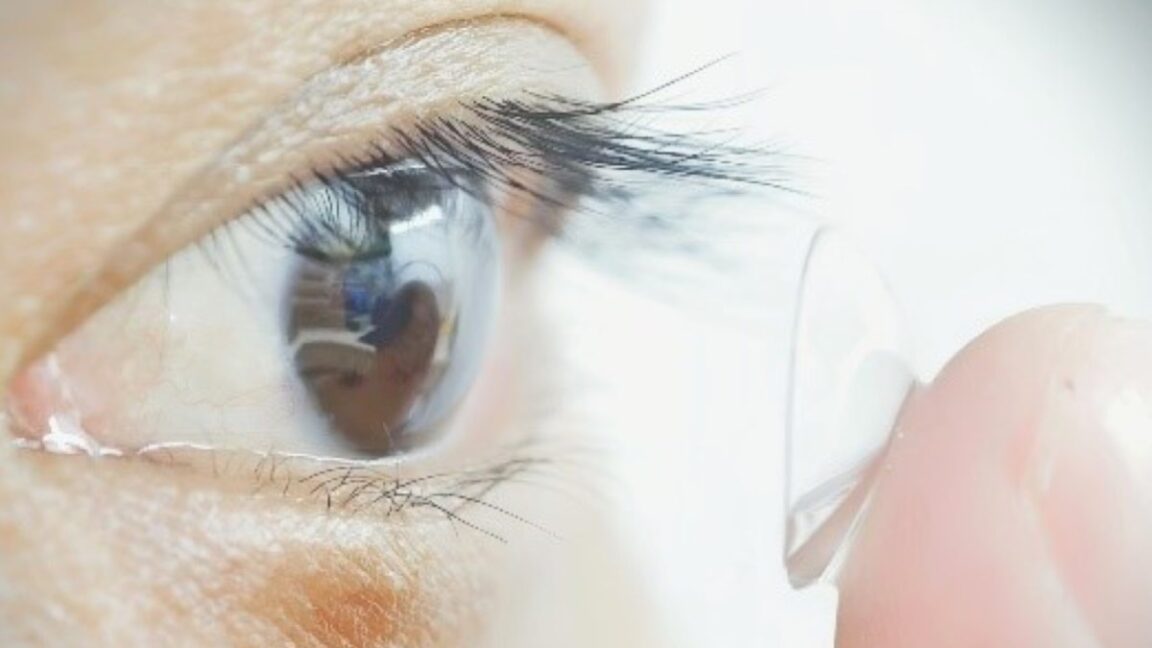Mice and humans were able to detect infrared light, even with their eyes closed, with limited resolution.
Tired of using bulky night vision goggles for your clandestine nocturnal activities? An interdisciplinary team of Chinese neuroscientists and materials scientists has developed near-infrared contact lenses that enabled both mice and humans to see in the dark, even with their eyes closed, according to a new paper published in the journal Cell.
Humans and other mammals can only perceive a limited range of the electromagnetic spectrum (light), usually in the 400–700 nm range. There are creatures that can see in infrared (snakes, mosquitoes, bullfrogs) or ultraviolet (bees, birds), and goldfish can perceive both. But humans must augment themselves with technology in order to expand our range of vision.
Night vision goggles and similar devices have been around since the 1930s, including infrared-visible converters, but these require external energy sources, and the converters have a multilayer structure that makes them opaque and hence challenging to integrate with a human eye. The authors previously were able to confer near-infrared vision to mice by injecting nanoparticles that bind to photoreceptors into their eyes—basically creating a near-infrared nanoantenna—but realized that most people would be averse to the prospect of sticking needles in their eyes. So they looked for a better alternative. Contact lenses seemed the obvious choice.
The team screened various biocompatible polymeric materials (used to make commercial contact lenses) to find just the right refractive index and optical and mechanical properties, and integrated them with the aforementioned nanoparticles to make upconversion contact lenses (UCLs). Then they tested their lenses on mice, giving them a choice between a dark box and a box illuminated with infrared light. Mice wearing the contacts chose the dark box; those without augmented vision showed no preference. And the pupils of the contact-wearing mice constricted in response to infrared light, while brain imaging showed the visual processing centers reacting to it as well.
A new perspective

The team tested their lenses on humans by asking subjects to detect flashing signals, akin to Morse code, in the infrared, and to identify the direction of incoming infrared light. The subjects could only perform those tasks while wearing the special contact lenses.
The authors were intrigued to find that both mice and humans were better able to discriminate infrared light compared to visible light when their eyes were closed, which they attribute to the fact that infrared light can penetrate the eyelid more effectively than visible light. They also tweaked the nanoparticles so that they could color-code different infrared wavelengths, thereby enabling wearers to perceive more details in the infrared, an adaptation that could help color-blind people perceive more wavelengths.
There are some limitations. The contact lenses are so close to the retina that they can't really capture fine details very well, because the converted light particles tend to scatter. The team made a wearable glass version of their nanoparticle technology so wearers could get higher resolution in the infrared. And right now the lenses can only detect infrared light projected from an LED; increasing the sensitivity of the nanoparticles to pick up lower levels of infrared would address this issue.
Still, it's a significant step. “Our research opens up the potential for non-invasive wearable devices to give people super-vision,” said co-author Tian Xue, a neuroscientist at the University of Science and Technology of China. “There are many potential applications right away for this material. For example, flickering infrared light could be used to transmit information in security, rescue, encryption, or anti-counterfeiting settings. In the future, by working together with materials scientists and optical experts, we hope to make a contact lens with more precise spatial resolution and higher sensitivity.”
Cell, 2025. DOI: 10.1016/j.cell.2025.04.019 (About DOIs).
Hope you enjoyed this news post.
Thank you for appreciating my time and effort posting news every day for many years.
News posts... 2023: 5,800+ | 2024: 5,700+ | 2025 (till end of April): 1,811
RIP Matrix | Farewell my friend ![]()



3175x175(CURRENT).thumb.jpg.b05acc060982b36f5891ba728e6d953c.jpg)


Recommended Comments
Join the conversation
You can post now and register later. If you have an account, sign in now to post with your account.
Note: Your post will require moderator approval before it will be visible.